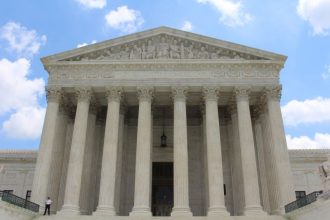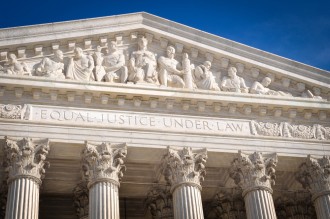January 22, 2015
Supreme Court Holds Trademark Tacking is a Question, like any Inquiry from the Perspective of an Ordinary Purchaser or Consumer, Should be Decided by the Jury
Background: In a priority contest between trademark owners, the owner of a mark is entitled to “tack on” earlier use of a similar mark provided that the two marks are sufficiently similar. Some circuits treated the question of whether the marks are sufficiently similar as a question of fact for a jury to decide, while other courts treated it as a question of law reserved for the judge.
Holding: Because the tacking inquiry operates from the perspective of an ordinary purchaser or consumer, the Supreme Court held that a jury should make this determination.
Discussion: In HANA FINANCIAL, INC. v. HANA BANK ET AL., No. 13–1211 (January 21, 2015), the Supreme Court held that the question of whether two trademarks may be “tacked” for purposes of determining priority is a question for the jury. Hana Financial sued Hana Bank for trademark infringement. While Hana Bank first used “HANA BANK” after Hana Financial first used “HANA FINANCIAL,” Hana Bank used “HANA OVERSEAS KOREAN CLUB” before Hana Financial used “HANA FINANCIAL.” If the use of HANA OVERSEAS KOREAN CLUB could be “tacked on” to Hana Bank’s use of “HANA BANK,” then Hana Bank would prevail against Hana Financial. The district court left it for the jury to decide whether “HANA OVERSEAS KOREAN CLUB” was sufficiently similar to HANA BANK to permit this tacking of rights. The jury found the terms were sufficiently similar that Hana Bank was entitled to credit for its prior use of “HANA OVERSEAS KOREAN CLUB,” and found in favor of Hana Bank. The Ninth Circuit affirmed, explaining that the tacking inquiry was an exceptionally limited and highly fact-sensitive matter reserved for juries, not judges.
As explained in the jury instructions in the case, a party may claim priority in a mark based on the first use date of a similar but technically distinct mark where the previously used mark is the legal equivalent of the mark in question or indistinguishable therefrom such that consumers consider both as the same mark. This is called tacking. The two marks must create the same, continuing commercial impression, and the later mark should not materially differ from or alter the character of the mark whose use is being tacked. Some of the circuits have treated tacking as a question of fact, while others (e.g. the Federal and Sixth Circuits) treated tacking as a question of law. The Supreme Court observed that the application of a test that relies upon an ordinary consumer’s understanding of the impression that a mark conveys falls comfortably within the ken of a jury. The Court said “we have long recognized across a variety of doctrinal contexts that, when the relevant question is how an ordinary person or community would make an assessment, the jury is generally the decision maker that ought to provide the fact-intensive answer.” Quoting from Railroad Co. v. Stout, 17 Wall. 657, 664 (1874), the Court said “It is assumed that twelve men know more of the common affairs of life than does one man, [and] that they can draw wiser and safer conclusions from admitted facts thus occurring than can a single judge.” The Supreme Court therefore affirmed the Ninth Circuit.
The issue of tacking arises only occasionally in trademark law. However, the Supreme Court’s approach — finding that a question that operates from the perspective of an ordinary purchaser or consumer should be decided by the jury might affect other consumer-centric issues, such as likelihood of confusion. While most district courts do treat likelihood of confusion as a question of fact, at least the Second, Sixth, and Federal Circuits review the issue as a question of law. Maybe Hana marks the beginning of the end of fact/law split on appellate review of likelihood of confusion.





































